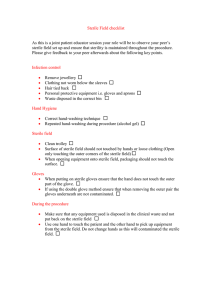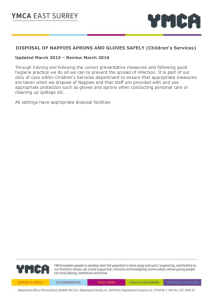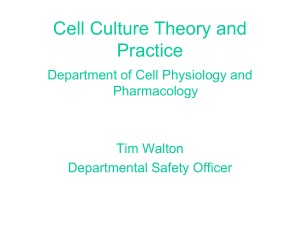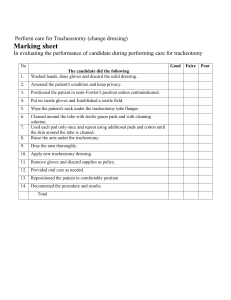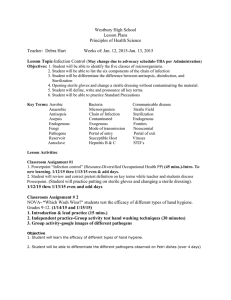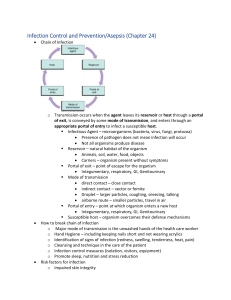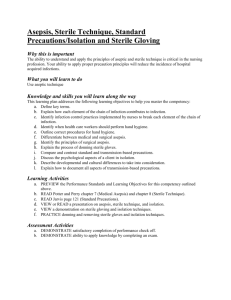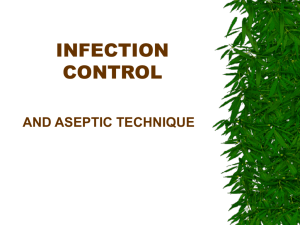Protocol for Procedure requiring Standard Aseptic Technique
advertisement
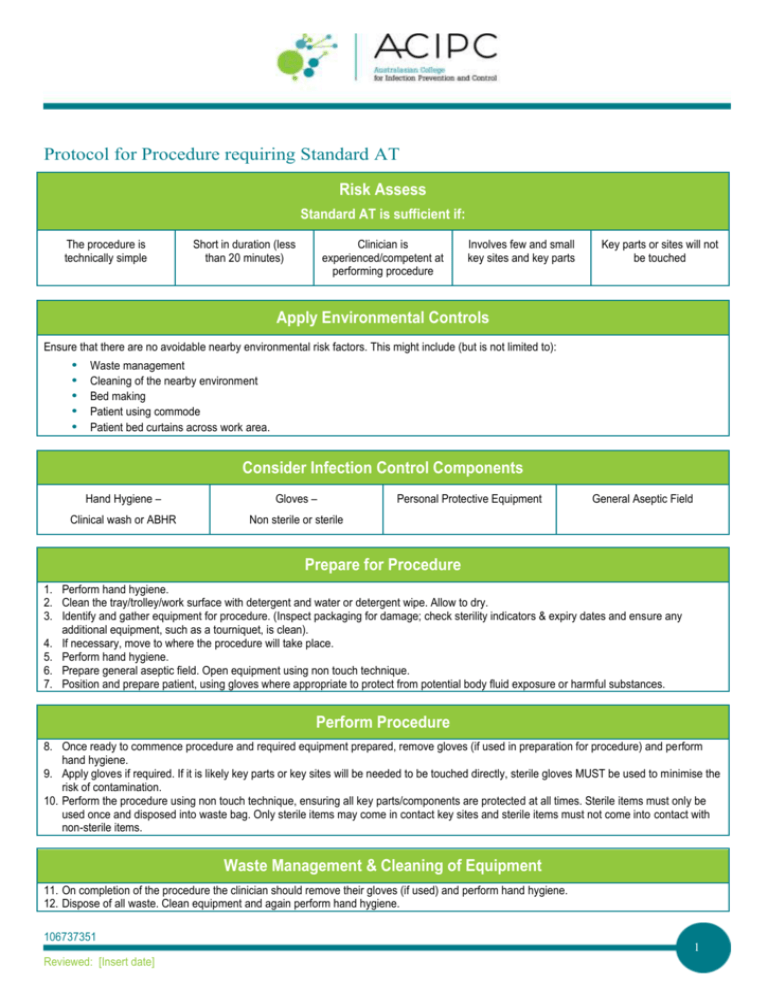
Protocol for Procedure requiring Standard AT Risk Assess Standard AT is sufficient if: The procedure is technically simple Short in duration (less than 20 minutes) Clinician is experienced/competent at performing procedure Involves few and small key sites and key parts Key parts or sites will not be touched Apply Environmental Controls Ensure that there are no avoidable nearby environmental risk factors. This might include (but is not limited to): Waste management Cleaning of the nearby environment Bed making Patient using commode Patient bed curtains across work area. Consider Infection Control Components Hand Hygiene – Gloves – Clinical wash or ABHR Non sterile or sterile Personal Protective Equipment General Aseptic Field Prepare for Procedure 1. Perform hand hygiene. 2. Clean the tray/trolley/work surface with detergent and water or detergent wipe. Allow to dry. 3. Identify and gather equipment for procedure. (Inspect packaging for damage; check sterility indicators & expiry dates and ensure any additional equipment, such as a tourniquet, is clean). 4. If necessary, move to where the procedure will take place. 5. Perform hand hygiene. 6. Prepare general aseptic field. Open equipment using non touch technique. 7. Position and prepare patient, using gloves where appropriate to protect from potential body fluid exposure or harmful substances. Perform Procedure 8. Once ready to commence procedure and required equipment prepared, remove gloves (if used in preparation for procedure) and perform hand hygiene. 9. Apply gloves if required. If it is likely key parts or key sites will be needed to be touched directly, sterile gloves MUST be used to minimise the risk of contamination. 10. Perform the procedure using non touch technique, ensuring all key parts/components are protected at all times. Sterile items must only be used once and disposed into waste bag. Only sterile items may come in contact key sites and sterile items must not come into contact with non-sterile items. Waste Management & Cleaning of Equipment 11. On completion of the procedure the clinician should remove their gloves (if used) and perform hand hygiene. 12. Dispose of all waste. Clean equipment and again perform hand hygiene. 106737351 Reviewed: [Insert date] 1 106737351 Reviewed: [Insert date] 2

